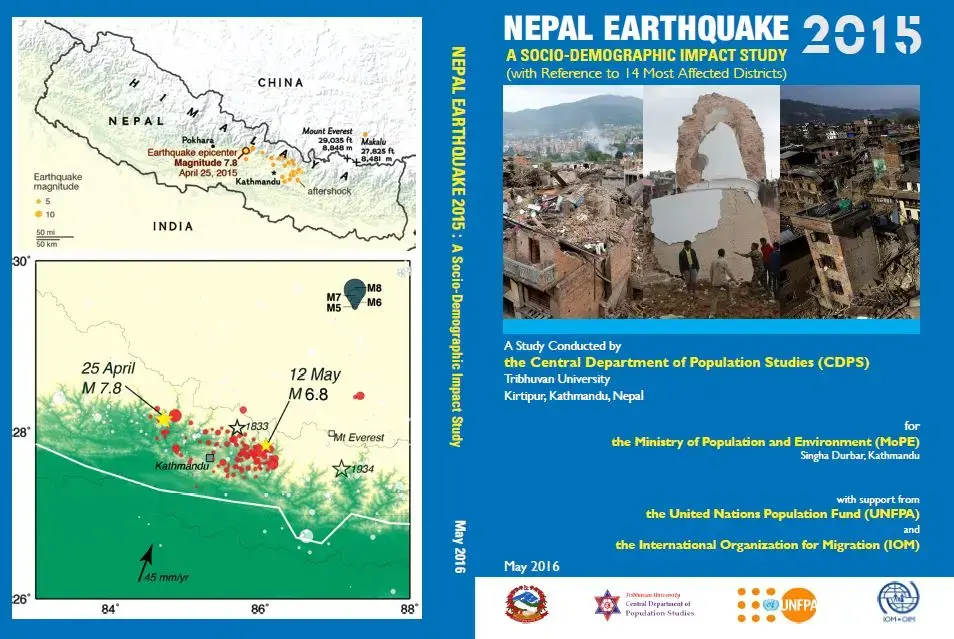The 2015 earthquake in Nepal and the subsequent aftershocks resulted in losses not only in terms of lives and physical infrastructures but also of historical, social, cultural and economic aspects of the country and its population. Thirty-one out of the 75 districts were affected by this devastation with 14 of them located in the Central and Western mountains and hills including Kathmandu Valley and categorized by the Government of Nepal as the most affected1. An estimated 5.4 million people live in these 14 districts.
In order to carry out a Damage and Loss Assessment, the government conducted a Post-Disaster Needs Assessment (PDNA) in May-June 2015 under the broader concept of building back better. While the PDNA assessed the damages of houses and buildings as well as the post-earthquake needs using a globally accepted methodology, it did not really focus on the socio-demographic impacts of the earthquake, that is, how households and communities had been affected, the level of local resilient social capacity to respond and how recovery and reconstruction efforts could be made more responsive.
Against this backdrop, it was decided to carry out this study in order to assess the socio-demographic impacts of the 2015 earthquake, with a focus on cultural diversity pertaining to household settings including caste/ethnicity, population dynamics (fertility, mortality, migration), as well as population size, composition and distribution. The study was meant to contribute to more cost-effective government policies on population dynamics resulting from the post-disaster context.
This survey was conducted among affected households in the 14 districts using multiple approaches and both quantitative and qualitative techniques to measure the socio-demographic impacts of the earthquake. CDPS/Tribhuvan University led the overall research and study design, fieldwork training, survey tool refinements, sample design, and data collection and management with the support from Ministry of Population and Environment, UNFPA, and IOM. The fieldwork was carried out during 20 November – 15 December 2015 with a total of 3,000 households surveyed, which was a statistically representative number.


